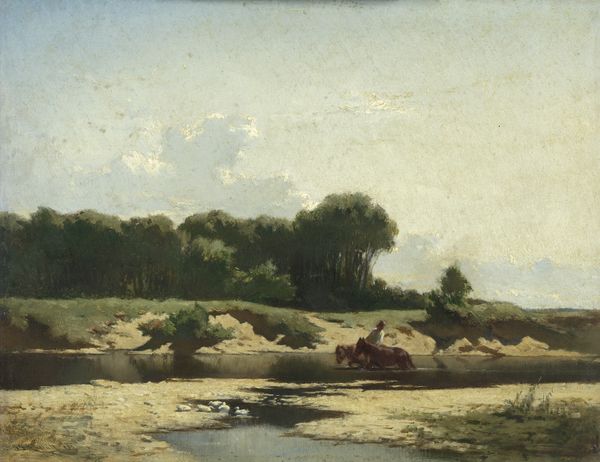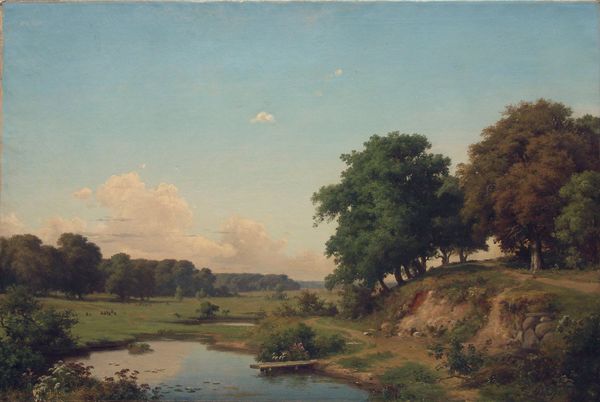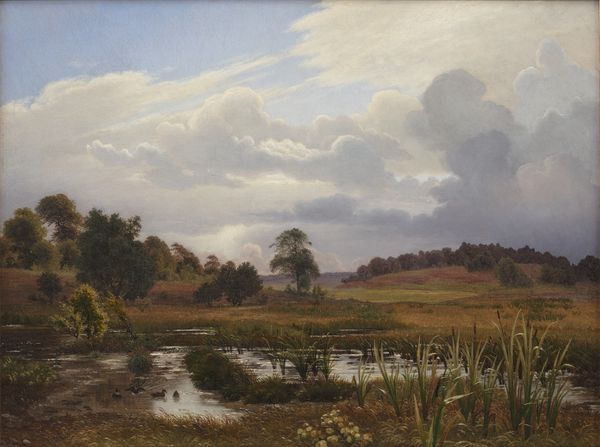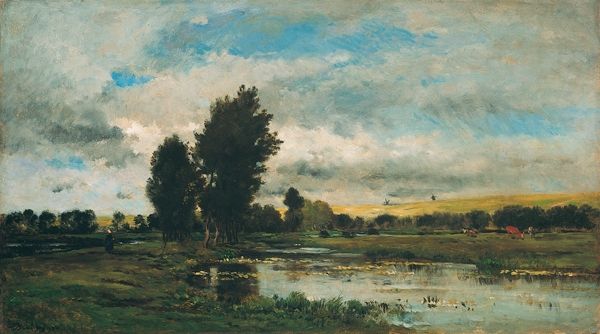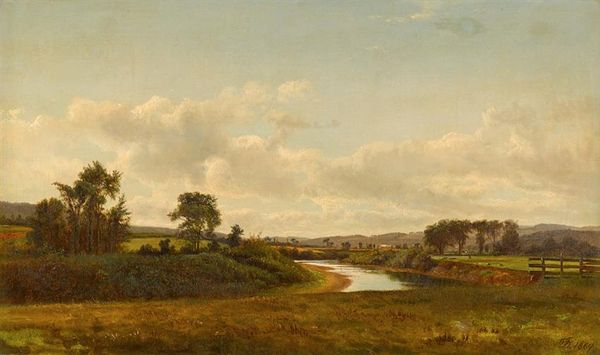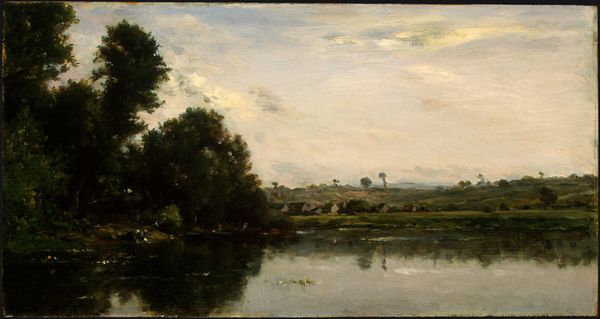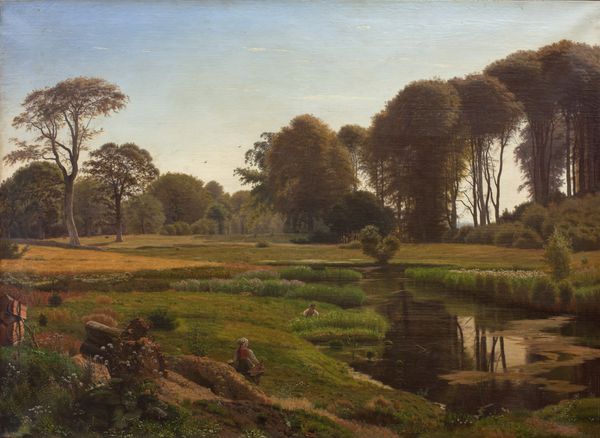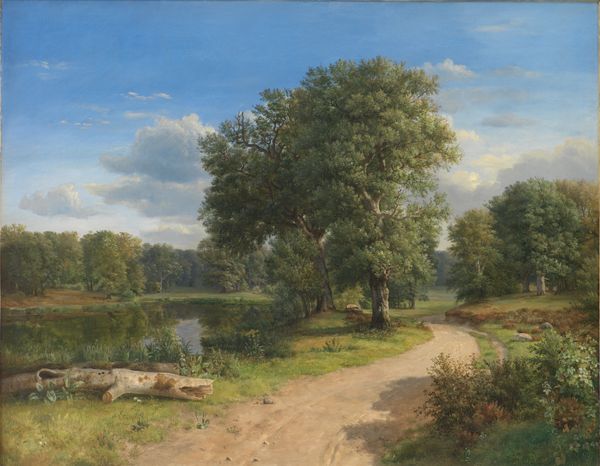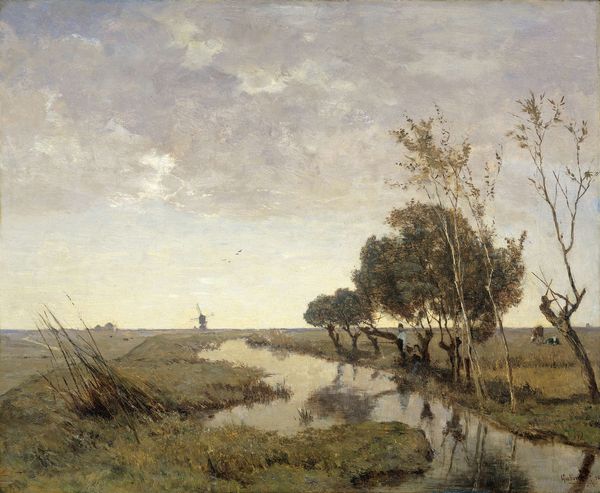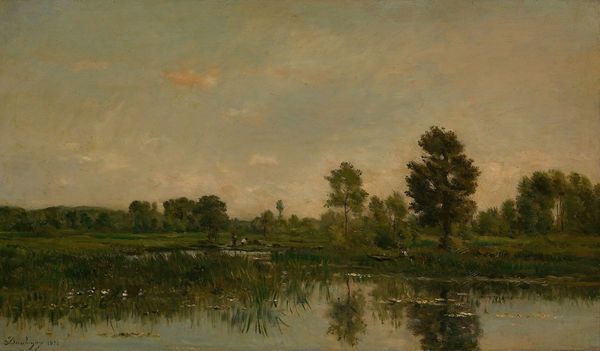
painting, oil-paint
#
painting
#
oil-paint
#
landscape
#
oil painting
#
genre-painting
#
realism
Dimensions: 57.5 cm (height) x 90 cm (width) (Netto), 87 cm (height) x 119.3 cm (width) x 10.8 cm (depth) (Brutto)
Editor: Here we have Anton Melbye’s "French River Landscape with a Bridge," painted in 1866 using oil paint. There's something so still and calm about the composition. What's your take on this seemingly straightforward landscape? Curator: Well, let's think about the "Realism" movement happening at this time, pushing back against idealized Romantic landscapes. Artists aimed to depict everyday life, but even that had a political charge. Is this a landscape anyone could access, or does it depict a space used for commerce and extraction of natural resources controlled by specific groups? How do we decide what makes landscape art significant, and who gets to make that decision? Editor: That’s a fascinating question! So, beyond just showing a pretty scene, this painting may also show societal structures, is that what you’re suggesting? The positioning of people almost at the edge, with labor happening a bit farther. Is that what you mean when you say landscape art signifies much more than what it seems? Curator: Precisely. Even the act of choosing this scene – this specific bridge, this angle, the light – makes it a statement about what Melbye and potentially his patrons valued. Who is prominently featured, and what labour do they perform? Whose voices are centered and which ones silenced? Consider its presentation in a museum like the SMK; what power does the museum as an institution hold in shaping art history? Editor: I see your point! It’s so much more than just the landscape; it is all these historical contexts intersecting within a picture, then placed into an even broader cultural and historical framework within an institution. I had not thought of landscape in those terms! Curator: Exactly! It is not just what is depicted, but also who gets to depict it, how they depict it, and who then gets to consume it and ascribe value. This way we also contextualize what this meant in history. What do you take away from the work now? Editor: I suppose I see now it's a negotiation, a conversation between the artist, the subject, and the viewer about the role of landscape within a specific political, social, and art historical setting.
Comments
No comments
Be the first to comment and join the conversation on the ultimate creative platform.
